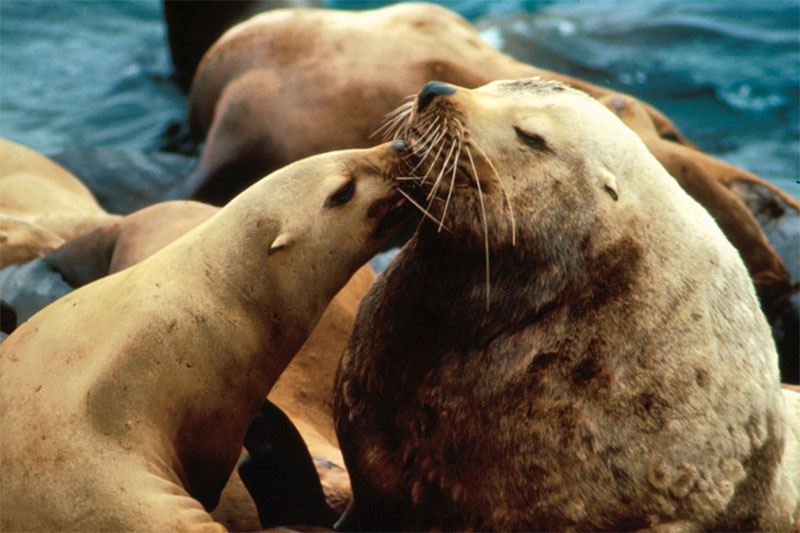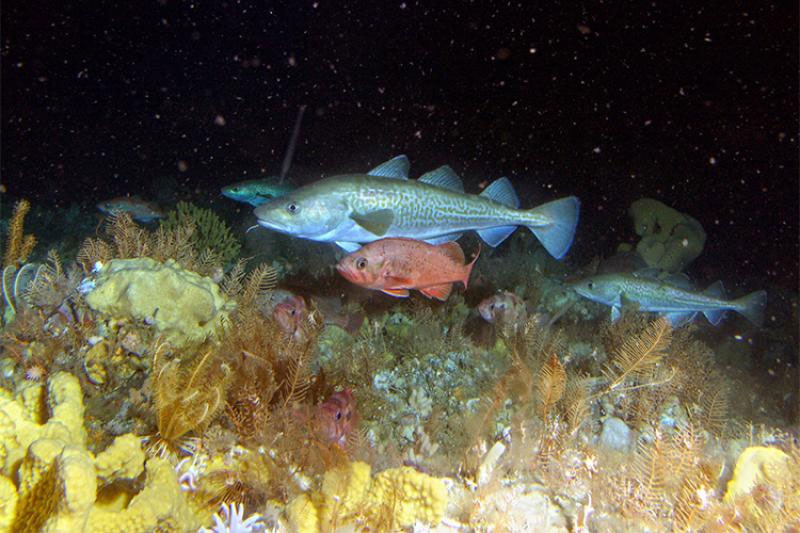Seascape Alaska 3: Aleutians Remotely Operated Vehicle Exploration and Mapping
(EX2304)
NOAA In Alaska
While the Seascape Alaska 3: Aleutians Remotely Operated Vehicle Exploration and Mapping expedition marks the first time that NOAA will use telepresence technology to engage scientists and members of the public in dives to explore deep waters off Alaska, NOAA and partners have been conducting research and operations in the Alaska region for years to support the sustainable management and conservation of Alaskan habitats and marine species, coastal community resilience, research and operations, and weather and climate monitoring and forecasts. Below are highlights from just some of the work that continues to help us understand the dynamic, often ice-covered seas of Alaska.
This short video highlights NOAA’s mission and work in the Alaska Region. It provides an overview of key programs and partners involved in achieving NOAA’s mission of science, service, and stewardship. This video was conceptualized by NOAA’s Alaska Regional Collaboration Team and produced by Mort Crim Communications, Inc. Download largest version (mp4, 137.8 MB)
Management and Conservation of Alaskan Habitats and Marine Species
NOAA conducts a wide range of activities to ensure sustainability of marine resources in Alaska. For example, the NOAA Fisheries’ Alaska Fisheries Science Center has been conducting research in Alaska for more than 40 years, including surveys and laboratory studies on 40 fish and crab species and monitoring commercial fishing activities to support management of resources in the Northeast Pacific and eastern Bering Sea; the study of marine mammals, including many of the North Pacific’s large whale populations that feed or live in Alaska and endangered species such as endangered western Steller sea lions, endangered Cook Inlet beluga whales, and endangered north Pacific right whales; studies of Alaska’s marine ecosystems from plankton, larval fish and crabs to adult fish; and development of predictive and new tools to support ecosystem-based fisheries management and help Alaska fishing and coastal communities plan and adapt to climate change.


The NOAA Fisheries Alaska Regional Office, located in Alaska’s capital city of Juneau, with field staff in offices in Anchorage, Kodiak, and Dutch Harbor, oversees the science-based stewardship of living marine resources and their habitats in the North Pacific and Arctic Oceans off Alaska, including sustainable fisheries, protected species, habitat conservation, and healthy ecosystems to support resilient coastal communities.
To increase understanding of deep-sea communities in the sub-Arctic waters of Alaska, NOAA Fisheries, through the NOAA’s Deep Sea Coral Research and Technology Program, is leading the Alaska Deep-Sea Coral and Sponge Initiative. This four-year science initiative, to which the NOAA Ocean Exploration Seascape Alaska expeditions will contribute, is aimed at collecting new information to help better manage and protect deep-sea coral and sponge ecosystems throughout Alaska.
Coastal Community Resilience
NOAA’s work in Alaska also helps keep coastal communities in Alaska safe, healthy, and vibrant. The NOAA Ocean Acidification Program, for example, is coordinating a wide range of projects in the Gulf of Alaska to better understand how reductions in the pH of ocean water are impacting local communities as well as fish, crabs, and other important marine life. NOAA’s National Centers for Coastal Ocean Science (NCCOS) is working with partners across the Alaska Harmful Algal Bloom Network to provide a statewide approach to harmful algal bloom awareness, research, monitoring, and response in Alaska to address human and wildlife health risks from toxic algal blooms. In partnership with the NOAA Office of Response and Restoration, NCCOS and partners also provide marine debris and oil spill response in the delicate Alaskan environment. And at the NOAA Kasitsna Bay Laboratory, NCCOS works in partnership with the College of Fisheries and Ocean Sciences at the University of Alaska Fairbanks, to conduct additional research on coastal impacts of climate change, ocean acidification, harmful algal blooms, and oil spills and hosts federal, state, tribal, and university researchers.
A NOAA Alaska navigation manager works directly with pilots, mariners, port authorities, and recreational boaters in the region to help identify navigational challenges facing the marine transportation system and provide resources and services to promote safe and efficient navigation. Additionally, NOAA Ships Fairweather and Rainier regularly conduct hydrographic operations in Alaska, collecting mapping data to measure water depth and identify submerged hazards to navigation. In addition to these two vessels, the NOAA Office of Marine and Aviation Operations also operates NOAA Ship Oscar Dyson in Alaskan waters to collect data on fish populations, conduct marine mammal and seabird surveys, and study marine ecosystems.

Weather and Climate Monitoring and Forecasts
Within Alaska, the National Weather Service operates 3 Weather Forecast Offices (which are also responsible for the issuance of marine forecast and warning products key to the success of science at sea!), 12 weather service offices, the Alaska Aviation Weather Unit, and the Alaska-Pacific River Forecast Center. And through programs such as the Alaska Center for Climate Assessment and Policy, a NOAA Climate Program Office Climate Adaptation Partnership, NOAA is helping local communities understand, prepare for, and respond to dramatic changes in the region’s climate.
The above is just a snapshot of NOAA’s work in the region and also does not include important partnerships and initiatives, such as Seascape Alaska, the Kachemak Bay National Estuarine Research Reserve, Alaska Sea Grant, and many, many others. To learn more about NOAA work in Alaska, visit the NOAA Alaska Region web page.
Published July 3, 2023